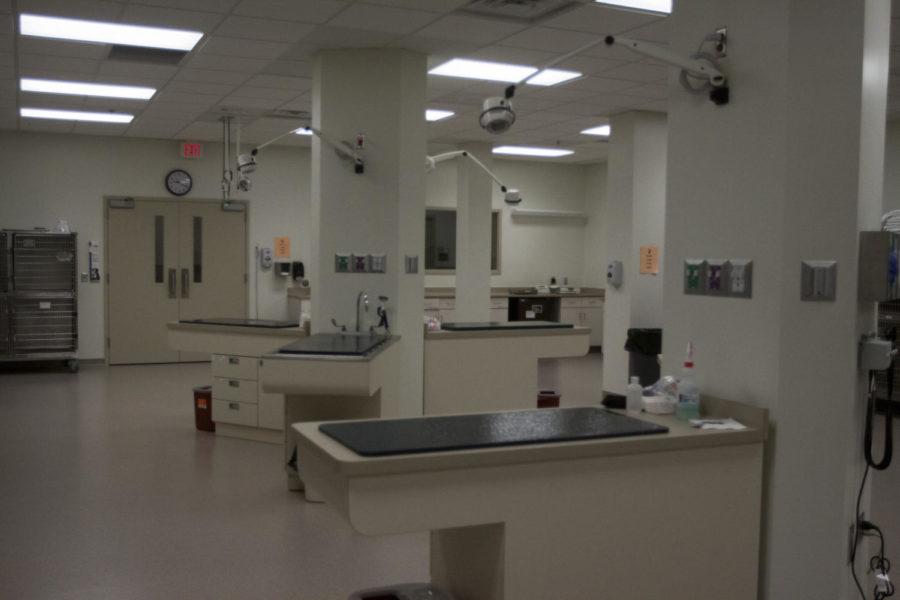ISU College of Veterinary Medicine’s expansion provides better experience for animals, students
March 5, 2013
Iowa State’s College of Veterinary Medicine has undergone a major expansion.
Completed in summer of 2012, 17,000 square feet of new construction and 88,000 square feet of renovated space have made the small animal hospital at the Lloyd Veterinary Medical Center one of the most state of the art facilities in the country.
Karl Kraus, professor and section head of small animal surgery, said he believes the expansion was a necessary step for the future of the hospital.
“The infrastructure [of the old building] was getting too old and obsolete,” Kraus said.
Kraus said with the new expansion, the veterinary doctors are able to care for the animals better.
“The entire old hospital is now just surgery, and we now have 11 induction stations for anesthesia. We also have less invasive procedures than we did previously, which is always better for the animal,” Kraus said.
The new renovated space includes separate waiting areas for dog and cat owners, an overnight area for pet owners who choose to spend the night, 24/7 ICU radiology center and multiple drug resistance rooms to prevent contamination of the animals or humans.
One of the most advanced technologies, as a result of the recent expansion, is the addition of LED lights above the operating tables in the surgical rooms.
“The LED lights change color depending on the tissue you’re operating on. If you’re working on belly tissues the lights turn white. But if you’re operating on bone, you don’t want a glare, so the lights turn a slightly reddish color,” Kraus said.
The renovated small animal hospital has not only benefitted the animal patients, but veterinary students as well.
“We have more space now, and that’s better for students primarily from a standpoint that there’s more examination rooms, and we also have rounds rooms, which are dedicated areas for students to work from and they are able to do evaluations more easily,” said Rodney Bagley, who is the executive director of the Lloyd Veterinary Medical Center.
The Hixson-Lied Small Animal Hospital treats animals ranging from dogs and cats to lizards and exotic pets and has seen an increase in their number of cases.
“Last year we saw the highest number of cases we’ve ever seen at around 19,000. So whether we were going to see those cases or not, having the expanded space definitely makes it easier to handle,” Bagley said.
The ISU College of Veterinary Medicine is the first public veterinary school in the United States.
“We are a teaching college, with the three missions being teaching, research and service. We house officers, students, interns and residents, and also other doctors who come to expand their talents,” Kraus said.
The small animal hospital has no major expansions planned for the near future, but they are doing their best to stay prepared.
“We’re always thinking ahead, and there are spaces in the new facility that haven’t been built out yet and have room for expansion and can be used to fit our needs should we choose to do so in the future,” Bagley said.“We hope to keep moving forward.”







